#Ancient stone structures
Text
Archaeologists have unearthed a 14.5 km (9mi) oasis fortification dating back to 2250 BC in Khaybar, Saudi Arabia. This fortress standing since the 4th millennium BC tells of the vibrant history of northwest Arabia, where lush oases thrived amidst arid expanses, shaping civilizations from the Paleolithic to the present.
The mysteries of Khaybar Oasis, one of Saudi Arabia's largest walled oases, once guarded precious water resources in the desert and nomad pastoralists strategically settled in this ancient haven, marking their cultural space in the heart of the North Arabian Desert.
This ground-breaking study published in the Journal of Archaeological Science, reveals the fascinating blend of nomad pastoralists, walled oases, and the monumental fortifications that have stood the test of time, shaping the rich tapestry of human habitation in pre-Islamic northwest Arabia. Principio del formulario
26 notes
·
View notes
Photo

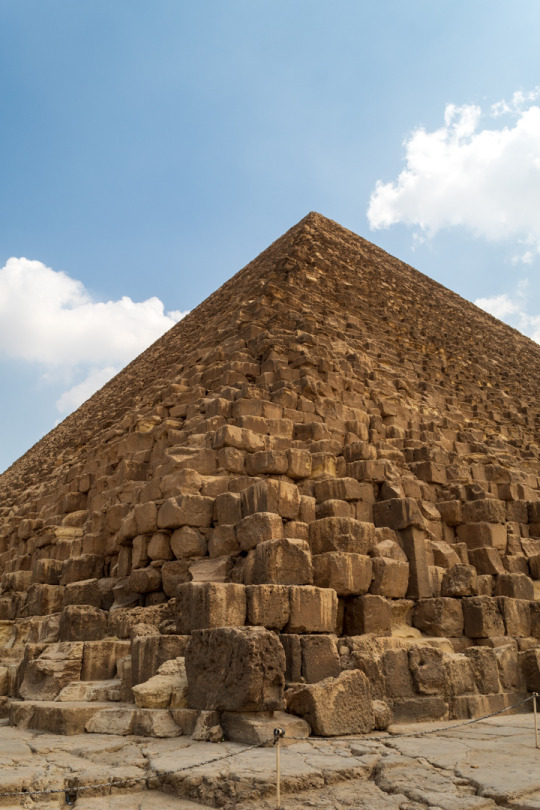
Points.
www.juliomaciasphotography.com | instagram | shop
09.07.22
Giza, Egypt
#photography#nikon#pyramids#look up#sky#triangles#shapes#architecture#ancient#stone#structure#history#travel#tourism#voyage#journey#wanderlust#wonder more#wander more#giza pyramids#giza#egypt#ancient egypt#north africa#africa
65 notes
·
View notes
Text


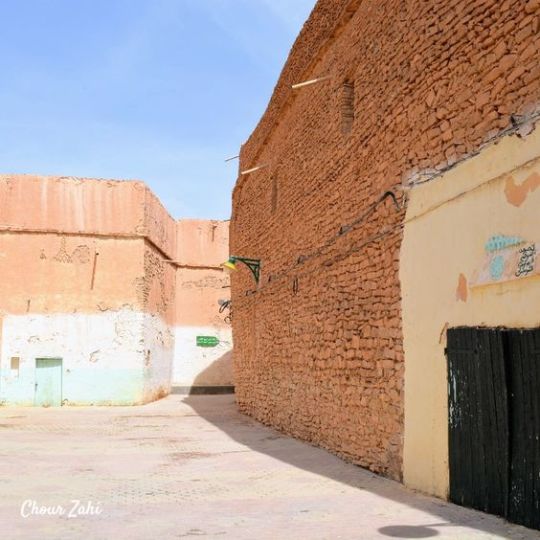
Le ksar de Aïn Madhi est inscrit un des monuments historiques à Laghouat
#Square - Composition#Photography#Architecture#History#Ancient#Old Ruin#Famous Place#Stone Material#Travel Destinations#Old#Built Structure#Wall - Building Feature#Tourism#my pictures#travel#city
4 notes
·
View notes
Text

2 notes
·
View notes
Text
Some locations and structures to include in your forest
Abandoned shrine
Alchemist’s lab
Ancient ruins
Army encampment
Battlefield memorial
Boathouse
Bridge, log
Bridge, stone arch
Bridge, suspension
Bridge, wooden beam
Causeway
Cablin
Cable car station
Cairns- grave markers
Cairns- trail marker
Cave system
Caved-in tunnel
Cemetery
Clearing
Campsite
Castle (robber baron or otherwise)
Collapsed building
Dam
Dirt track
Ditch, defensive
Ditch, henge monument
Dock
Dragon’s lair
Elven settlement
Fairy ring
Farm
Ferry landing
Ford
Fort, earthen
Fort, stone
Fort, wooden
Game trail
Ghost town
Guardhouse
Haunted ruins
Hermit’s hut
Hollow hill
Hunting lodge
Hunter’s hide
Inn
Logging camp
Manor house
Mine
Monastery
Outlaw’s hideout
Overgrown ruins
Potholes
Paved road
Portal
Quarry
Railroad
Rail station
Raised platform
Roadside grave
Sacred grove
Sawmill
Sky burial platform
Signpost
Stone circle
Summoning ring
Switchback
Temple
Tollbooth
Treehouse
Troll cave
Tunnel entrance
Turnpike
Village
Waterwheel
Watchtower, stone
Watchtower, wooden
Witches’ cottage
Wizard’s tower
Zip line
#writing#creative writing#writing inspiration#writing ideas#writing prompts#worldbuilding#writer#writers#writing community#writer on tumblr#writeblr
2K notes
·
View notes
Text
Fantasy Guide to Interiors



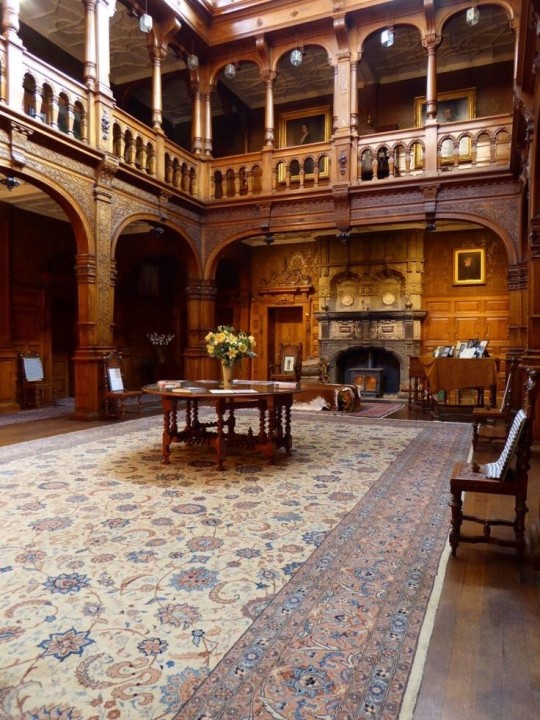
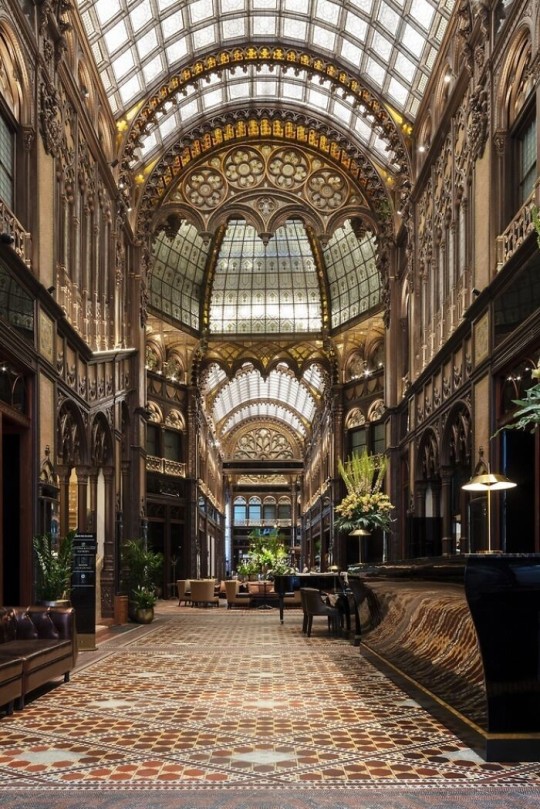
As a followup to the very popular post on architecture, I decided to add onto it by exploring the interior of each movement and the different design techniques and tastes of each era. This post at be helpful for historical fiction, fantasy or just a long read when you're bored.
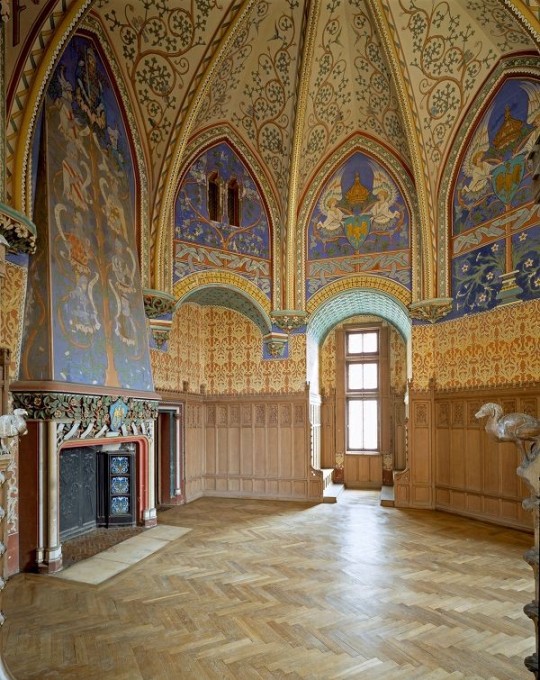


Interior Design Terms
Reeding and fluting: Fluting is a technique that consists a continuous pattern of concave grooves in a flat surface across a surface. Reeding is it's opposite.
Embossing: stamping, carving or moulding a symbol to make it stand out on a surface.
Paneling: Panels of carved wood or fabric a fixed to a wall in a continuous pattern.
Gilding: the use of gold to highlight features.
Glazed Tile: Ceramic or porcelain tiles coated with liquid coloured glass or enamel.
Column: A column is a pillar of stone or wood built to support a ceiling. We will see more of columns later on.
Bay Window: The Bay Window is a window projecting outward from a building.
Frescos: A design element of painting images upon wet plaster.
Mosaic: Mosaics are a design element that involves using pieces of coloured glass and fitted them together upon the floor or wall to form images.
Mouldings: ornate strips of carved wood along the top of a wall.
Wainscoting: paneling along the lower portion of a wall.
Chinoiserie: A European take on East Asian art. Usually seen in wallpaper.
Clerestory: A series of eye-level windows.
Sconces: A light fixture supported on a wall.
Niche: A sunken area within a wall.
Monochromatic: Focusing on a single colour within a scheme.
Ceiling rose: A moulding fashioned on the ceiling in the shape of a rose usually supporting a light fixture.
Baluster: the vertical bars of a railing.
Façade: front portion of a building
Lintel: Top of a door or window.
Portico: a covered structure over a door supported by columns
Eaves: the part of the roof overhanging from the building
Skirting: border around lower length of a wall
Ancient Greece
Houses were made of either sun-dried clay bricks or stone which were painted when they dried. Ground floors were decorated with coloured stones and tiles called Mosaics. Upper level floors were made from wood. Homes were furnished with tapestries and furniture, and in grand homes statues and grand altars would be found. Furniture was very skillfully crafted in Ancient Greece, much attention was paid to the carving and decoration of such things. Of course, Ancient Greece is ancient so I won't be going through all the movements but I will talk a little about columns.
Doric: Doric is the oldest of the orders and some argue it is the simplest. The columns of this style are set close together, without bases and carved with concave curves called flutes. The capitals (the top of the column) are plain often built with a curve at the base called an echinus and are topped by a square at the apex called an abacus. The entablature is marked by frieze of vertical channels/triglyphs. In between the channels would be detail of carved marble. The Parthenon in Athens is your best example of Doric architecture.
Ionic: The Ionic style was used for smaller buildings and the interiors. The columns had twin volutes, scroll-like designs on its capital. Between these scrolls, there was a carved curve known as an egg and in this style the entablature is much narrower and the frieze is thick with carvings. The example of Ionic Architecture is the Temple to Athena Nike at the Athens Acropolis.
Corinthian: The Corinthian style has some similarities with the Ionic order, the bases, entablature and columns almost the same but the capital is more ornate its base, column, and entablature, but its capital is far more ornate, commonly carved with depictions of acanthus leaves. The style was more slender than the others on this list, used less for bearing weight but more for decoration. Corinthian style can be found along the top levels of the Colosseum in Rome.
Tuscan: The Tuscan order shares much with the Doric order, but the columns are un-fluted and smooth. The entablature is far simpler, formed without triglyphs or guttae. The columns are capped with round capitals.
Composite: This style is mixed. It features the volutes of the Ionic order and the capitals of the Corinthian order. The volutes are larger in these columns and often more ornate. The column's capital is rather plain. for the capital, with no consistent differences to that above or below the capital.
Ancient Rome
Rome is well known for its outward architectural styles. However the Romans did know how to add that rizz to the interior. Ceilings were either vaulted or made from exploded beams that could be painted. The Romans were big into design. Moasics were a common interior sight, the use of little pieces of coloured glass or stone to create a larger image. Frescoes were used to add colour to the home, depicting mythical figures and beasts and also different textures such as stonework or brick. The Romans loved their furniture. Dining tables were low and the Romans ate on couches. Weaving was a popular pastime so there would be tapestries and wall hangings in the house. Rich households could even afford to import fine rugs from across the Empire. Glass was also a feature in Roman interior but windows were usually not paned as large panes were hard to make. Doors were usually treated with panels that were carved or in lain with bronze.
Ancient Egypt
Egypt was one of the first great civilisations, known for its immense and grand structures. Wealthy Egyptians had grand homes. The walls were painted or plastered usually with bright colours and hues. The Egyptians are cool because they mapped out their buildings in such a way to adhere to astrological movements meaning on special days if the calendar the temple or monuments were in the right place always. The columns of Egyptian where thicker, more bulbous and often had capitals shaped like bundles of papyrus reeds. Woven mats and tapestries were popular decor. Motifs from the river such as palms, papyrus and reeds were popular symbols used.
Ancient Africa
African Architecture is a very mixed bag and more structurally different and impressive than Hollywood would have you believe. Far beyond the common depictions of primitive buildings, the African nations were among the giants of their time in architecture, no style quite the same as the last but just as breathtaking.
Rwandan Architecture: The Rwandans commonly built of hardened clay with thatched roofs of dried grass or reeds. Mats of woven reeds carpeted the floors of royal abodes. These residences folded about a large public area known as a karubanda and were often so large that they became almost like a maze, connecting different chambers/huts of all kinds of uses be they residential or for other purposes.
Ashanti Architecture: The Ashanti style can be found in present day Ghana. The style incorporates walls of plaster formed of mud and designed with bright paint and buildings with a courtyard at the heart, not unlike another examples on this post. The Ashanti also formed their buildings of the favourite method of wattle and daub.
Nubian Architecture: Nubia, in modern day Ethiopia, was home to the Nubians who were one of the world's most impressive architects at the beginning of the architecture world and probably would be more talked about if it weren't for the Egyptians building monuments only up the road. The Nubians were famous for building the speos, tall tower-like spires carved of stone. The Nubians used a variety of materials and skills to build, for example wattle and daub and mudbrick. The Kingdom of Kush, the people who took over the Nubian Empire was a fan of Egyptian works even if they didn't like them very much. The Kushites began building pyramid-like structures such at the sight of Gebel Barkal
Japanese Interiors
Japenese interior design rests upon 7 principles. Kanso (簡素)- Simplicity, Fukinsei (不均整)- Asymmetry, Shizen (自然)- Natural, Shibumi (渋味) – Simple beauty, Yugen (幽玄)- subtle grace, Datsuzoku (脱俗) – freedom from habitual behaviour, Seijaku (静寂)- tranquillity.
Common features of Japanese Interior Design:
Shoji walls: these are the screens you think of when you think of the traditional Japanese homes. They are made of wooden frames, rice paper and used to partition
Tatami: Tatami mats are used within Japanese households to blanket the floors. They were made of rice straw and rush straw, laid down to cushion the floor.
Genkan: The Genkan was a sunken space between the front door and the rest of the house. This area is meant to separate the home from the outside and is where shoes are discarded before entering.
Japanese furniture: often lowest, close to the ground. These include tables and chairs but often tanked are replaced by zabuton, large cushions. Furniture is usually carved of wood in a minimalist design.
Nature: As both the Shinto and Buddhist beliefs are great influences upon architecture, there is a strong presence of nature with the architecture. Wood is used for this reason and natural light is prevalent with in the home. The orientation is meant to reflect the best view of the world.
Islamic World Interior
The Islamic world has one of the most beautiful and impressive interior design styles across the world. Colour and detail are absolute staples in the movement. Windows are usually not paned with glass but covered in ornate lattices known as jali. The jali give ventilation, light and privacy to the home. Islamic Interiors are ornate and colourful, using coloured ceramic tiles. The upper parts of walls and ceilings are usually flat decorated with arabesques (foliate ornamentation), while the lower wall areas were usually tiled. Features such as honeycombed ceilings, horseshoe arches, stalactite-fringed arches and stalactite vaults (Muqarnas) are prevalent among many famous Islamic buildings such as the Alhambra and the Blue Mosque.
Byzantine (330/395–1453 A. D)
The Byzantine Empire or Eastern Roman Empire was where eat met west, leading to a melting pot of different interior designs based on early Christian styles and Persian influences. Mosaics are probably what you think of when you think of the Byzantine Empire. Ivory was also a popular feature in the Interiors, with carved ivory or the use of it in inlay. The use of gold as a decorative feature usually by way of repoussé (decorating metals by hammering in the design from the backside of the metal). Fabrics from Persia, heavily embroidered and intricately woven along with silks from afar a field as China, would also be used to upholster furniture or be used as wall hangings. The Byzantines favoured natural light, usually from the use of copolas.
Indian Interiors
India is of course, the font of all intricate designs. India's history is sectioned into many eras but we will focus on a few to give you an idea of prevalent techniques and tastes.
The Gupta Empire (320 – 650 CE): The Gupta era was a time of stone carving. As impressive as the outside of these buildings are, the Interiors are just as amazing. Gupta era buildings featured many details such as ogee (circular or horseshoe arch), gavaksha/chandrashala (the motif centred these arches), ashlar masonry (built of squared stone blocks) with ceilings of plain, flat slabs of stone.
Delhi Sultanate (1206–1526): Another period of beautifully carved stone. The Delhi sultanate had influence from the Islamic world, with heavy uses of mosaics, brackets, intricate mouldings, columns and and hypostyle halls.
Mughal Empire (1526–1857): Stonework was also important on the Mughal Empire. Intricately carved stonework was seen in the pillars, low relief panels depicting nature images and jalis (marble screens). Stonework was also decorated in a stye known as pietra dura/parchin kari with inscriptions and geometric designs using colored stones to create images. Tilework was also popular during this period. Moasic tiles were cut and fitted together to create larger patters while cuerda seca tiles were coloured tiles outlined with black.
Chinese Interiors
Common features of Chinese Interiors
Use of Colours: Colour in Chinese Interior is usually vibrant and bold. Red and Black are are traditional colours, meant to bring luck, happiness, power, knowledge and stability to the household.
Latticework: Lattices are a staple in Chinese interiors most often seen on shutters, screens, doors of cabinets snf even traditional beds.
Lacquer: Multiple coats of lacquer are applied to furniture or cabinets (now walls) and then carved. The skill is called Diaoqi (雕漆).
Decorative Screens: Screens are used to partition off part of a room. They are usually of carved wood, pained with very intricate murals.
Shrines: Spaces were reserved on the home to honour ancestors, usually consisting of an altar where offerings could be made.
Of course, Chinese Interiors are not all the same through the different eras. While some details and techniques were interchangeable through different dynasties, usually a dynasty had a notable style or deviation. These aren't all the dynasties of course but a few interesting examples.
Song Dynasty (960–1279): The Song Dynasty is known for its stonework. Sculpture was an important part of Song Dynasty interior. It was in this period than brick and stone work became the most used material. The Song Dynasty was also known for its very intricate attention to detail, paintings, and used tiles.
Ming Dynasty(1368–1644): Ceilings were adorned with cloisons usually featuring yellow reed work. The floors would be of flagstones usually of deep tones, mostly black. The Ming Dynasty favoured richly coloured silk hangings, tapestries and furnishings. Furniture was usually carved of darker woods, arrayed in a certain way to bring peace to the dwelling.
Han Dynasty (206 BC-220 AD): Interior walls were plastered and painted to show important figures and scenes. Lacquer, though it was discovered earlier, came into greater prominence with better skill in this era.
Tang Dynasty (618–907) : The colour palette is restrained, reserved. But the Tang dynasty is not without it's beauty. Earthenware reached it's peak in this era, many homes would display fine examples as well. The Tang dynasty is famous for its upturned eaves, the ceilings supported by timber columns mounted with metal or stone bases. Glazed tiles were popular in this era, either a fixed to the roof or decorating a screen wall.
Romanesque (6th -11th century/12th)
Romanesque Architecture is a span between the end of Roman Empire to the Gothic style. Taking inspiration from the Roman and Byzantine Empires, the Romanesque period incorporates many of the styles. The most common details are carved floral and foliage symbols with the stonework of the Romanesque buildings. Cable mouldings or twisted rope-like carvings would have framed doorways. As per the name, Romansque Interiors relied heavily on its love and admiration for Rome. The Romanesque style uses geometric shapes as statements using curves, circles snf arches. The colours would be clean and warm, focusing on minimal ornamentation.
Gothic Architecture (12th Century - 16th Century)
The Gothic style is what you think of when you think of old European cathedrals and probably one of the beautiful of the styles on this list and one of most recognisable. The Gothic style is a dramatic, opposing sight and one of the easiest to describe. Decoration in this era became more ornate, stonework began to sport carving and modelling in a way it did not before. The ceilings moved away from barreled vaults to quadripartite and sexpartite vaulting. Columns slimmed as other supportive structures were invented. Intricate stained glass windows began their popularity here. In Gothic structures, everything is very symmetrical and even.
Mediaeval (500 AD to 1500)
Interiors of mediaeval homes are not quite as drab as Hollywood likes to make out. Building materials may be hidden by plaster in rich homes, sometimes even painted. Floors were either dirt strewn with rushes or flagstones in larger homes. Stonework was popular, especially around fireplaces. Grand homes would be decorated with intricate woodwork, carved heraldic beasts and wall hangings of fine fabrics.
Renaissance (late 1300s-1600s)
The Renaissance was a period of great artistry and splendor. The revival of old styles injected symmetry and colour into the homes. Frescoes were back. Painted mouldings adorned the ceilings and walls. Furniture became more ornate, fixed with luxurious upholstery and fine carvings. Caryatids (pillars in the shape of women), grotesques, Roman and Greek images were used to spruce up the place. Floors began to become more intricate, with coloured stone and marble. Modelled stucco, sgraffiti arabesques (made by cutting lines through a layer of plaster or stucco to reveal an underlayer), and fine wall painting were used in brilliant combinations in the early part of the 16th century.
Tudor Interior (1485-1603)
The Tudor period is a starkly unique style within England and very recognisable. Windows were fixed with lattice work, usually casement. Stained glass was also in in this period, usually depicting figures and heraldic beasts. Rooms would be panelled with wood or plastered. Walls would be adorned with tapestries or embroidered hangings. Windows and furniture would be furnished with fine fabrics such as brocade. Floors would typically be of wood, sometimes strewn with rush matting mixed with fresh herbs and flowers to freshen the room.
Baroque (1600 to 1750)
The Baroque period was a time for splendor and for splashing the cash. The interior of a baroque room was usually intricate, usually of a light palette, featuring a very high ceiling heavy with detail. Furniture would choke the room, ornately carved and stitched with very high quality fabrics. The rooms would be full of art not limited to just paintings but also sculptures of marble or bronze, large intricate mirrors, moldings along the walls which may be heavily gilded, chandeliers and detailed paneling.
Victorian (1837-1901)
We think of the interiors of Victorian homes as dowdy and dark but that isn't true. The Victorians favoured tapestries, intricate rugs, decorated wallpaper, exquisitely furniture, and surprisingly, bright colour. Dyes were more widely available to people of all stations and the Victorians did not want for colour. Patterns and details were usually nature inspired, usually floral or vines. Walls could also be painted to mimic a building material such as wood or marble and most likely painted in rich tones. The Victorians were suckers for furniture, preferring them grandly carved with fine fabric usually embroidered or buttoned. And they did not believe in minimalism. If you could fit another piece of furniture in a room, it was going in there. Floors were almost eclusively wood laid with the previously mentioned rugs. But the Victorians did enjoy tiled floors but restricted them to entrances. The Victorians were quite in touch with their green thumbs so expect a lot of flowers and greenery inside. with various elaborately decorated patterned rugs. And remember, the Victorians loved to display as much wealth as they could. Every shelf, cabinet, case and ledge would be chocked full of ornaments and antiques.
Edwardian/The Gilded Age/Belle Epoque (1880s-1914)
This period (I've lumped them together for simplicity) began to move away from the deep tones and ornate patterns of the Victorian period. Colour became more neutral. Nature still had a place in design. Stained glass began to become popular, especially on lampshades and light fixtures. Embossing started to gain popularity and tile work began to expand from the entrance halls to other parts of the house. Furniture began to move away from dark wood, some families favouring breathable woods like wicker. The rooms would be less cluttered.
Art Deco (1920s-1930s)
The 1920s was a time of buzz and change. Gone were the refined tastes of the pre-war era and now the wow factor was in. Walls were smoother, buildings were sharper and more jagged, doorways and windows were decorated with reeding and fluting. Pastels were in, as was the heavy use of black and white, along with gold. Mirrors and glass were in, injecting light into rooms. Gold, silver, steel and chrome were used in furnishings and decor. Geometric shapes were a favourite design choice. Again, high quality and bold fabrics were used such as animal skins or colourful velvet. It was all a rejection of the Art Noveau movement, away from nature focusing on the man made.
Modernism (1930 - 1965)
Modernism came after the Art Deco movement. Fuss and feathers were out the door and now, practicality was in. Materials used are shown as they are, wood is not painted, metal is not coated. Bright colours were acceptable but neutral palettes were favoured. Interiors were open and favoured large windows. Furniture was practical, for use rather than the ornamentation, featuring plain details of any and geometric shapes. Away from Art Deco, everything is straight, linear and streamlined.
#This took forever#I'm very tired#But enjoy#I covered as much as I could find#Fantasy Guide to interiors#interior design#Architecture#writings#writing resources#Writing reference#Writing advice#Writer's research#writing research#Writer's rescources#Writing help#Mediaeval#Renaissance#Chinese Interiors#Japanese Interiors#Indian interiors#writing#writeblr#writing reference#writing advice#writer#spilled words#writers
3K notes
·
View notes
Text
476,000-Year-Old Wooden Structure Unearthed in Zambia
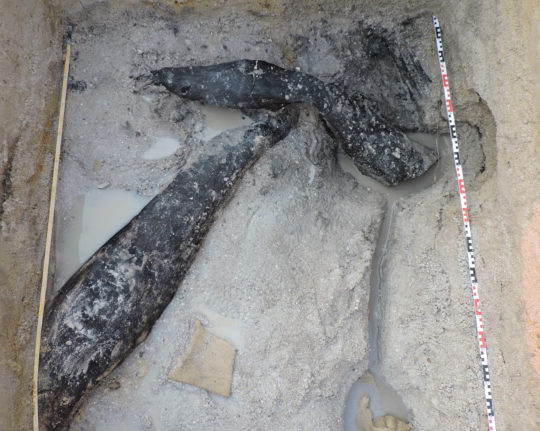
Archaeologists have found an ancient wooden structure at the archaeological site of Kalambo Falls in Zambia. This structure — dated to about 476,000 years ago — has no known parallels in the African or Eurasian Paleolithic and may represent the earliest use of wood in construction.
Wooden artifacts rarely survive from the Early Paleolithic as they require exceptional conditions for preservation.
Therefore, archaeologists have limited information about when and how hominins used this basic raw material or how Paleolithic humans structured their environments.
“Our find has changed how I think about our early ancestors,” said University of Liverpool’s Professor Larry Barham.
“Forget the label ‘Stone Age,’ look at what these people were doing: they made something new, and large, from wood.” Read more.
2K notes
·
View notes
Text
I was talking about editing a bunch of wikipedia pages to talk about native americans and farmer family friend was like
"yeah, it's like when we went to Turkey and we visited these historical museums, and the museums acted like the history of the country began when the Ottomans took over. The Hagia Sophia was built in what, 500 AD? And there are Roman ruins everywhere but the 'history' only begins in the 1400s. In this book I'm reading about the history of agriculture in Kentucky the author doesn't even discuss Native Americans before Europeans came. It's a huge oversight."
I've consciously tried to unlearn that shit so many times why does it STILL unlock little doors in my brain when I learn examples of how deeply arbitrary the boundaries of what we see as "history" are.
He also talked about how we have this idea of cave men being our ancestors because the things left by them in caves were more permanent, whereas the structures and things people built above ground would have decayed.
...I really do think about that a lot. How we have evidence of the civilizations that built things out of stone, while civilizations that used materials that biodegraded wouldn't have left as much evidence.
Come to think of it, some of the best known ancient civilizations did live in deserts. But they had contemporaries (like Punt, which we now know was in Ethiopia iirc...)
Farmer family friend also has been to Arizona (Might have been New Mexico? Idk.) and saw these Indigenous rock carvings he told me about that I never stopped thinking about. According to him, there's a rock face that has pictographs carved into it showing the steps of how to plant and harvest corn. "Very simple," he said, "like a tutorial."
And the crazy thing is. There's this nearby rock formation that casts a shadow on the rock face. And throughout the year, as the position of the sun changes, the shadow points to the step in the corn growing tutorial you're supposed to be doing at that time of year.
...I swear this guy has me come over just so he can have someone to talk to while he's doing mind numbing manual labor.
5K notes
·
View notes
Note
Hi Gallus, I'm doing some worldbuilding and you seem like you could be connected enough for me to find an answer to the problem of dwarven agriculture. Many problems are created by the requirement of no sunlight, as even the common response of mushrooms still need light to break down decomposing matter as a primary energy source. Currently, we're thinking that they use a special type of mushroom that breaks down rocks in an energy-producing reaction, giving them enough energy to absorb nutrients and grow - this would serve a second purpose in explaining why building a massive hollowed-out mountain fortress doesn't produce an equally large amount of gravel.
Any thoughts? We're grasping at straws kinda lol
Well, some thoughts:
There's plenty of cave systems (especially Karst Systems) that are at least partially open to Sunlight- especially the kind that have rivers running through them, which is something else that's really helpful for agriculture.
For Example: This Cool AF Sinkhole cave in china that has an entire Forest in it
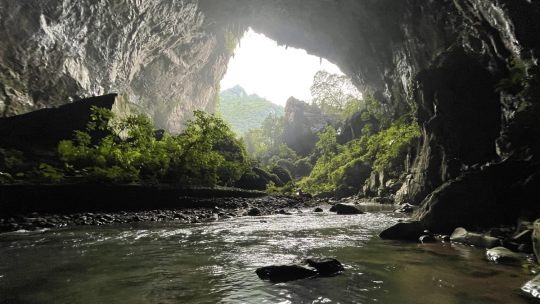
Now There's a view to put outside the city Gates!
Karst specifically is a landscape where underground rivers hollow out the limestone underground and then the cave roofs fall in. This kind of landscape answers your gravel question nicely: the hollowed out mountain does produce an equal amount of gravel, but the gravel turns up as the sandy banks of the river system hundreds of miles away.
So, there's your sunlight that can be used directly, or reflected or magically transferred deeper into the cave system.
Or they just put more holes in the roof! Unless your dwarves are also vampires, there's no reason for them to not hollow out a few Skylights into the mountain too.
But let's talk some other cave ecology and agriculture!
For starters, your dwarves could be sitting on top of a literal gold mine that would allow them to trade for a lot of needed materials and crops.
And by gold mine, I mean Salt Mine.
Historically, salt comes out of hollowed-out mountains and is worth more than gold.
Also something the humans have historically fought a bunch of wars over, so there's some free political tensions if you needed that!
I can also mean the possible fucking enormous piles of bat guano that accumulates in Karst caves, which is the world's most insanely good fertilizer, and ALSO something that has been worth more than it's weight in gold.
Speaking of Gold, another thing that often lives in sinkhole caves in abundance is BEES. turns out, limestone stalactites are a terrific place to build a hive that is difficult for predators to reach, stays dry and the stone substrate means the hives can reach many tons in weight before they start having structural issues. That sweet, sweet insect-derived liquid gold is already important to Dwarves in a lot of folklore- it's really hard to have a Traditional Dwarven Mead Hall without the honey to make the mead, you know?
So you got your mushrooms, you got your sunlight-grown sinkhole crops, you got your traded goods and you got your source of alcohol- the only thing really missing from an ancient food pyramid here is a staple carbohydrate. To that end, may I propose our good Peruvian Friend: The Potato.
Grain crops aren't actually all that nutritious and were kept around in ancient societies more as legal tender that kept the peasants busy, because wheat or rice takes months to grow, an enormous amount of labor to harvest, and wheat also needs to be milled before it can be turned into food- all enormously time-consuming processes that keep peasants busy and easy to rule tyranically over.
Potatoes though? Pop one in the ground in spring and you can dig up fingerlings all summer, and if you make potato towers, you can harvest up to 40lbs of delicious, easy-to-prepare-and-store carb out of a single plant- a real space-saver for the limited sinkhole skyspace.
If your dwarves have cheese, the potato makes even more sense, because Potato+dairy is the easiest, most nutritionally complete survival food there is.
Finally, consider: Dwarven Vodka.
This post is open for anyone to comment suggestions on, but that's my take: put your dwarves in a Karst-sinkhole cave system, give them a highly in demand resource like salt or guano, bees, and taters. Boom. Whole agriculture, economy and political scheme starters.
1K notes
·
View notes
Text

Petra
#question everything#history#ancestors#ancient#art#ancient buildings#ancient structures#ancient stone bridge
0 notes
Text
The sophisticated engineering techniques behind the Menga Dolmen have been revealed! A new study, exposes how massive stones weighing over 100 tons were transported to the hilltop, creating an awe-inspiring monument that was the biggest structure of its kind.
22 notes
·
View notes
Text
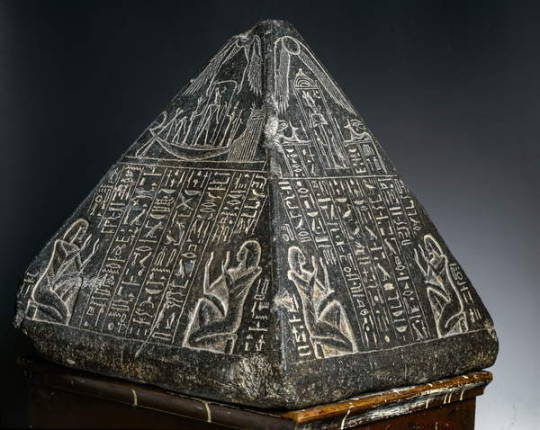
Pyramidion of Amenhotep (Huy)
New Kingdom, 19th Dynasty, reign of Ramesses II, ca. 1279-1213 BC.
From Saqqara necropolis.
Now in the Egyptian Museum, Cairo. TR 7-114-24-1
True pyramids (at least the larger ones), as opposed to step pyramids in Egypt were topped by a special stone called a pyramidion, or sometimes a capstone, which was itself a miniature pyramid. It brought the pyramid structure to a point at the same angle and the same proportions as the main body.
The ancient Egyptian word for the pyramidion, which could also sit atop the apex of an obelisk, was ben-benet, named for the sacred Benben stone kept in the temple of Heliopolis, the oldest center of the sun cult in Egypt. During the Old Kingdom, they were usually made of diorite, granite or a very fine limestone which was then covered in gold or electrum.
Read more
484 notes
·
View notes
Text



Laghouat a inscrit Le ksar de Aïn Madhi est inscrit un des monuments historiques à Laghouat
#Photography#Architecture#History#Outdoors#One Person#Ancient#Old Ruin#Famous Place#Stone Material#Travel Destinations#Old#Built Structure#travel#beauty in nature
3 notes
·
View notes
Text

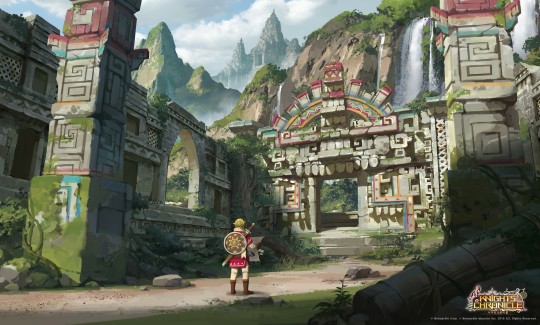
#ancient#ancient structure#temple#aztec inspired#stone structure#world building#culture#concept art#perspective
1 note
·
View note
Text
Origins of the Bay Clans: Stone and the Lynx (Part 2)
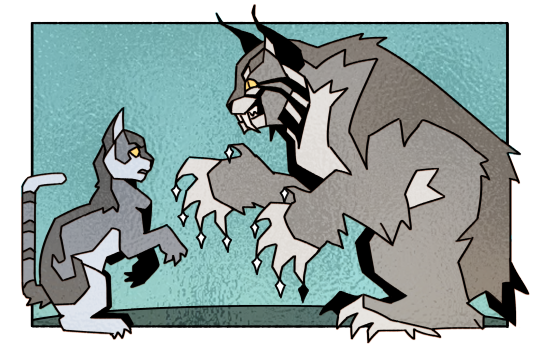
The tracks led inland, further than the cats of Stone’s little clan had yet dared to travel. She followed the river upstream, skirting the thrashing current as it threw itself against the banks. The forest grew denser, the hemlocks thicker, the sharp peaks of the mountains taller, casting the valley in deep shadow. All was silent but the river, and the sound of strange, buzzing bird calls that rang eerily through the trees. Though her heart trembled, Stone trekked on, her pawsteps guided by purpose and the tracks that still sat unmistakable in the mud.
Stone had never followed a river to its origin, had never even thought of it as a possibility. Water–rivers, oceans, rains–lived outside the boundaries of a lifespan, within birth and death. Rivers weren’t something that just began, or ended, they simply cycled–at least, that’s what she had believed.
After hours spent unceasingly hiking through the valley, Stone emerged from the edge of the treeline. The pebbled ground spread flat in front of her, before abruptly spiking upward to form the range of mountains. Two peaks pierced the sky, and nestled between them was a landform unlike anything Stone had ever seen. The river rushed forward from the base of a giant white slope, a crystalline mass carved deep with blue crevices.
The wall shone like a piece of the moon itself, bleeding into the valley, its essence spilling into the forest before winding its way to the Bay. As Stone drew closer, she realized with a shock that the structure was made of ice, frozen solid despite the warmth of late spring.
She halted at the river’s edge, looking upon the structure in wonder. Was the moon made of ice? Had a shard of it fallen from the heavens upon the mountains? What else could create a fortress so massive, so imposing yet nurturing, whose icy waters fed the land and the bay?
These questions swam through her mind, but she tossed them to the side with a flick of her ears. For now, the answers were unknowable, and she must remain focused on her task.
She shook out her pelt and continued her path: the ground now had turned to gravel, and she tracked by scent instead of footprints. The slope turned steep, then rocky, a gray mountain face broken only by patches of unmelted snow and determined shrubs. Below her, the mass of ice gleamed, stretching out beyond the peaks like a blinding white sea.
As she continued along the mountainside, she noticed an opening in the cliff face, a dark entrance where the ice field met the mountain. She quickened her pace until she reached the cave entrance, standing on the barrier of darkness. Here, the scent she was tracking hung in the air, strong as ever, leading her into the blackness. She slipped into the cave without a second thought
Inside was a large cave, and she quickly crossed the open stretch of ground to the back, where a darker shadow lay. A tunnel.
Curiosity drove her forward, driving away any fear she might have felt. Down into the tunnel she tread, deeper and deeper into the veins of the mountain. For ages she was guided by scent alone, and the narrow tunnel walls pressing on all sides. An eternity of darkness.
Finally, Stone saw light, a blue glow that softly spilled into the end of the tunnel. Her footsteps quickened, and the cat entered into a cavern. Her breath hitched as she stepped into the light, awed by the sight before her. A medium sized cave rose around her, walls of smooth, layered stone arcing above her. The stone was washed with blue, for one wall was made not of rock, but entirely of ice. It was a deep, rich blue, as sunlight filtered down into the fragment of icy moon.
Within the ice wall’s bubbles and cracks hung an even stranger sight. A giant skeleton, ancient and fragmented, was trapped frozen in the ice, the remains of a creature Stone had never seen before. Though it’s thick bones and long, curved fangs were utterly unfamiliar, something in Stone knew it had once called itself catkin. A forgotten ancestor.
In front of the ice, sitting still and gray as the rocks around it, was a towering feline silhouette, its tufted ears outlined by the cold light. Stone’s fellow, wild catkin cousin. The Lynx.
The Lynx turned its gaze towards her slowly, expectantly, like it had known about her presence even before she did. Stone approached it, wary.
“I admire your tenacity, cat” Its voice was a gravelly purr. “I thought you’d stop at the treeline.”
Stone skirted the wall carefully, keeping several pawsteps of distance between her and the creature. “Why did you assume that?”
The Lynx wrinkled its nose in a wry smirk. “Well, look at you. You’re an imitation of a cat. This wilderness is unfit for your kind.”
Stone flattened her ears, attempting to keep her voice level. “What exactly do you mean?”
“You call yourselves ‘cats’, yet your kind feeds by human hands. You have grown small and thin-furred, distant from your nobler origins. You can only survive in little packs, reliant on the work of others, unable to face nature with your own merit—A true ‘cat’ walks in solitude, you know nothing of the sort.”
Stone looked beyond the Lynx to the ice wall behind it, where the massive bones of their great ancestor lay suspended in time. “You say my kind has fallen, but have yours not? Have you not also grown smaller than this god, your fangs short, your bones thin? It too lived in solitude, yet here it lies, dead, its life unremembered by its catkin. You mock my community, but we have lived this long despite this lands’ harshness, and will continue to do so.”
The Lynx’s smug expression faded, and its gaze grew intense as it stared at Stone. “Even gods die, housecat. The only thing life guarantees is an ending.” It curled its lip. “Your ‘community’ is not exempt from this.”
Stone met its eyes, unwavering. “If we are catkin, what bars me from the same powers you possess? Surely I can learn to survive by your means, surely I can find access to your blessings.”
The Lynx almost laughed, but the scoff caught in its throat. It narrowed its eyes, suddenly thoughtful, the smirk creeping back up its muzzle.
“Maybe I can offer you a taste of godhood, little cat. The lives of my predecessors run through me, from the tip of my tail through all ten of my claws.” The deity sat back on its haunches and held up its massive paws in demonstration. For a brief moment, its claws twinkled with a faint light, like stars plucked straight from the sky.
“One of these is mine, of course. But I have nine to spare.” It tilted its head down at her, its fangs gleaming in the blue cavern light. “Provided I deem you worthy of them.”
Stone raised her head in challenge. “What would make me worthy?”
The Lynx paused to consider, eyeing her up and down.
“To you alone I will grant these lives, thus you alone must face me.” The lynx narrowed its eyes. “Prove to me your will and strength, and defeat me in battle. If I submit, I grant you these lives, and the chance to explore this bay with greater distance between death and yourself.”
“Your loss, of course, will cost you your life.” It dipped its head towards her. “Is it a deal?”
Stone paused, hesitant, her heart fluttering in her chest. How could she face this creature in her state, small in stature, weary from her climb, completely alone? Despite her apprehension, her curiosity was stronger. There was only one chance for an opportunity like this, and even if she declined, what would stop the Lynx from killing her anyway?.
She nodded once. “I accept your terms.”
The lynx nodded back. Its fangs flashed. It stretched its claws.
They leapt into battle.
Stone was swift, but the Lynx was strong and skilled. It battered her with massive paws, slamming her into the cold rocky floor. Stone dodged and weaved through its attacks, but the cavern was small, and every leap Stone made seemed to send her into another faceful of claws.
Her opponent threw a powerful swipe, tossing her against the ice wall with a thud. Back against the blue glow, Stone crouched low, struggling to catch her breath. Her strength was waning, and Stone knew with every moment her chances of victory grew slimmer. Her paws shook slightly. The Lynx had noticed her waver, and began to pad towards with calm, sure steps. It smiled–it was eager to finish her off. How could she win this?
She thought of the cats–the clan–she had left behind, who likely waited anxiously for their wayward leader’s return. Would they falter without her guidance? Would the glimmer of hope she had lit in their hearts snuff out with fear? If only she could lead them to the majestic moon glacier, show them the ethereal ancient glow of the blue cave, renew their spirits with wonder at the wilderness they were trapped in. Stone suddenly stiffened, steeling herself as she lifted her gaze back toward her foe. Though she fought alone in the cavern, her mind conjured the presence of her clan behind her. She would not die here. She would die among the cats she had befriended, who had banded together in their time of need. The cats she needed, who needed her to return alive.
With a burst of vigor, Stone launched herself toward the lynx’s head, her weight and confidence catching it off guard. She clung to its face, slashing its ears, her momentum sending it crashing hard into the floor. It flailed its huge paws, but Stone stood steadfast upon its chest, pressing her own paws down forcefully against its throat. Her claws dug in, blood welled up around her toes. The lynx grew more panicked, struggling wildly, its breath stuttering in strangled gasps. Stone pressed harder.
“St–Sto-”
Stone leaned close into its face. “Do you yield?”
The Lynx thrashed its head, attempting to nod frantically. “Yg-Yes!”
Stone slowly lifted her paws, releasing pressure off the creature’s throat. It gasped for air, then shoved her off its chest, throwing her to the floor. She scrambled to her paws, watching the Lynx heave. After it had caught its breath, the Lynx pressed its paw deep into the stone floor. It did so with strange power, impressing into the rock like it was mud, leaving the crisp outline of its giant pawprint. It beckoned her over. Its breath was hoarse. “Come.”
Stone approached the Lynx. She eyed it warily, nervous that it would decide to ignore the deal and kill her anyway. But it didn’t move as she stood above it, her paws settling on the edge of its pawprint, which seemed to sparkle slightly in the dim, cold light.
The Lynx glared up at her, its cool demeanor vanished, its eyes blazing with controlled fury. “Touch your nose to the floor,” it growled. “You will receive your reward.”
Carefully, Stone dipped her head down, until her nose brushed against the floor’s icy chill. For a brief moment, all was still.
Suddenly, she was blinded by overwhelming light. The force of the glare threw her head back, and her vision was assaulted by an oppressive blur of color and noise. Images flashed in her mind, landscapes, memories, creatures she has never seen before. Each streaked by, too fast for her to fully process the scenes. Waves of emotion crashed in her, sending her reeling, thrown into a raging sea of grief and joy and fear and wonder. She felt all of time as it had crept by, millions of years of the past and future stretched out infinitely, lived all at once in a single instant. She felt everything. She felt nothing. It was the most agonizing pain she had ever experienced, swept in a flood of sheer euphoria. She knew places and beasts and times she had no name for, all lived through and known by the catkin before her. It was the longest moment of her life, but as she crouched, trembling, blinking her eyes back to the sight of the blue cavern, she realized only seconds had passed.
The Lynx had stood, and had begun moving toward the cave’s exit. It turned to look down at her, and Stone returned its gaze, panting heavily, her fur on end and buzzing with strange energy.
It was silent for a moment. “You now have eight more lives to live along with your own. More than any little cat has had before. Your blessing and your curse.” It lulled thoughtfully, its expression had settled back into its neutral stare.
Its voice was cold, though laced with an undertone of contempt–and perhaps, Stone thought, respect. “Do not treat this victory lightly, Stone. Every day you live here will be another test, another gamble with your life. Living here is a game with no winners, and you and your fellows can only stall the march of nature for so long.”
The lynx turned, padding toward the exit. “The gods here will meddle where they like, and though you have bested me, I can not guarantee my kin will be deterred from entertaining themselves with playthings like you.”
The god stopped in the entrance, then glanced back toward her, its face in shadow.
“Good luck, Stone. You will need it.”
It disappeared.
For a moment, Stone stood alone in the blue cavern.
She was not Stone anymore. Something had changed within her, the Lynx’s stars sat heavy in her chest, glittered on her whiskers. Just as an icy piece of the moon had fallen to the earth and become one with it, fragments of the stars had melded with her being. She was Stonestar, and her pelt glowed with the new (old?) lives that settled under her fur.
And she was alive. More than she had ever been before.
And it was time to return to her clan.
#oops wrong blocg#this one is more of a written story#im more of a visual storyteller than an author so hopefully it reads ok#oh also this is the version of the story that’s been passed down through the clans#so it’s been embellished and should not necessarily be taken at face value#since stonestar was the only one there and this was many decades ago#lore#stone#stonestar#my art#the lynx#warrior cats#alaska clans
570 notes
·
View notes
Text
A system of ancient ceramic water pipes, the oldest ever unearthed in China, shows that neolithic people were capable of complex engineering feats without the need for a centralized state authority, finds a new study by University College London researchers.
In a study published in Nature Water, the archaeological team describe a network of ceramic water pipes and drainage ditches at the Chinese walled site of Pingliangtai dating back 4,000 years to a time known as the Longshan period. The network shows cooperation among the community to build and maintain the drainage system, though no evidence of a centralized power or authority.
Dr. Yijie Zhuang (UCL Institute of Archaeology), senior and corresponding author on the paper, said, "The discovery of this ceramic water pipe network is remarkable because the people of Pingliangtai were able to build and maintain this advanced water management system with stone age tools and without the organization of a central power structure. This system would have required a significant level of community-wide planning and coordination, and it was all done communally."
The ceramic water pipes make up a drainage system which is the oldest complete system ever discovered in China. Made by interconnecting individual segments, the water pipes run along roads and walls to divert rainwater and show an advanced level of central planning at the neolithic site.
What's surprising to researchers is that the settlement of Pingliangtai shows little evidence of social hierarchy. Its houses were uniformly small and show no signs of social stratification or significant inequality among the population. Excavations at the town's cemetery likewise found no evidence of a social hierarchy in burials, a marked difference from excavations at other nearby towns of the same era.
But, despite the apparent lack of a centralized authority, the town's population came together and undertook the careful coordination needed to produce the ceramic pipes, plan their layout, install and maintain them, a project which likely took a great deal of effort from much of the community.
The level of complexity associated with these pipes refutes an earlier understanding in archaeological fields that holds that only a centralized state power with governing elites would be able to muster the organization and resources to build a complex water management system. While other ancient societies with advanced water systems tended to have a stronger, more centralized governance, or even despotism, Pingliangtai demonstrates that was not always needed, and more egalitarian and communal societies were capable of these kinds of engineering feats as well.
898 notes
·
View notes